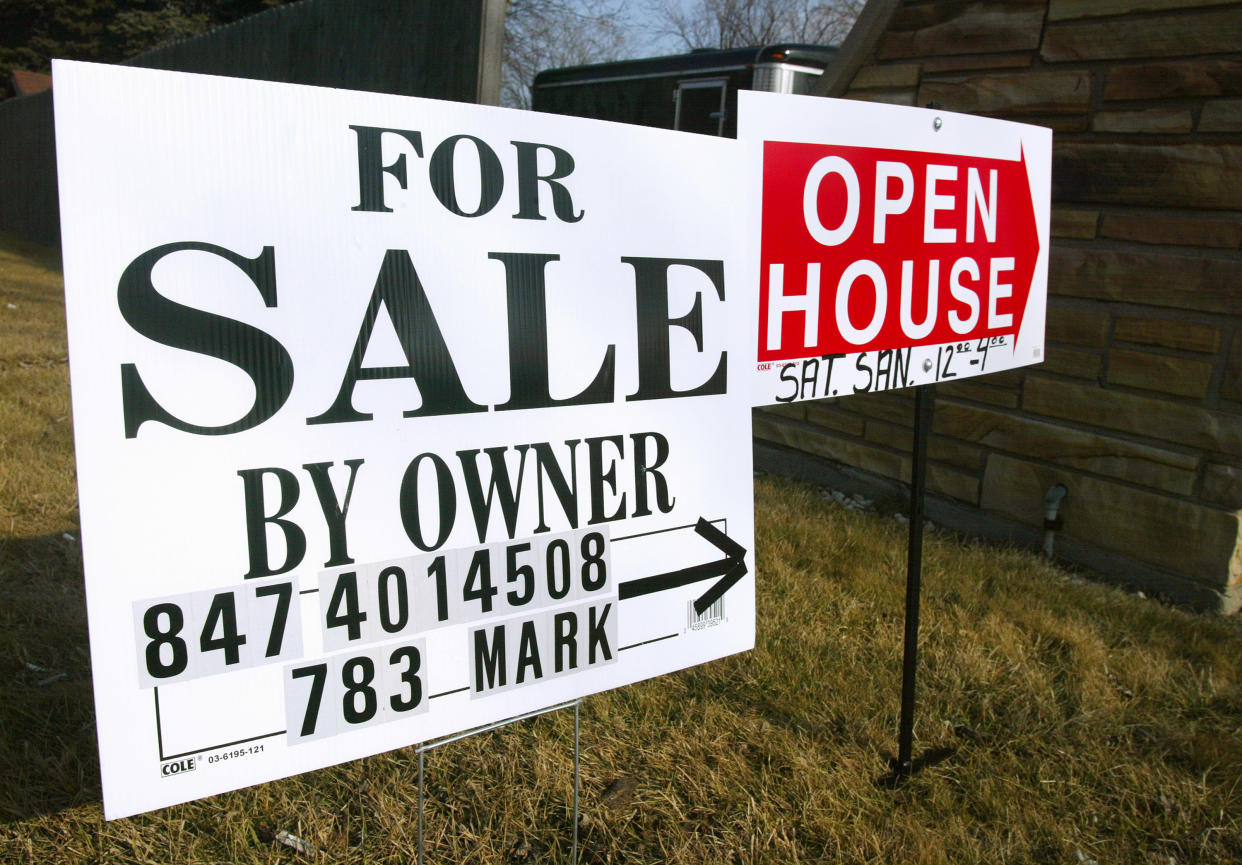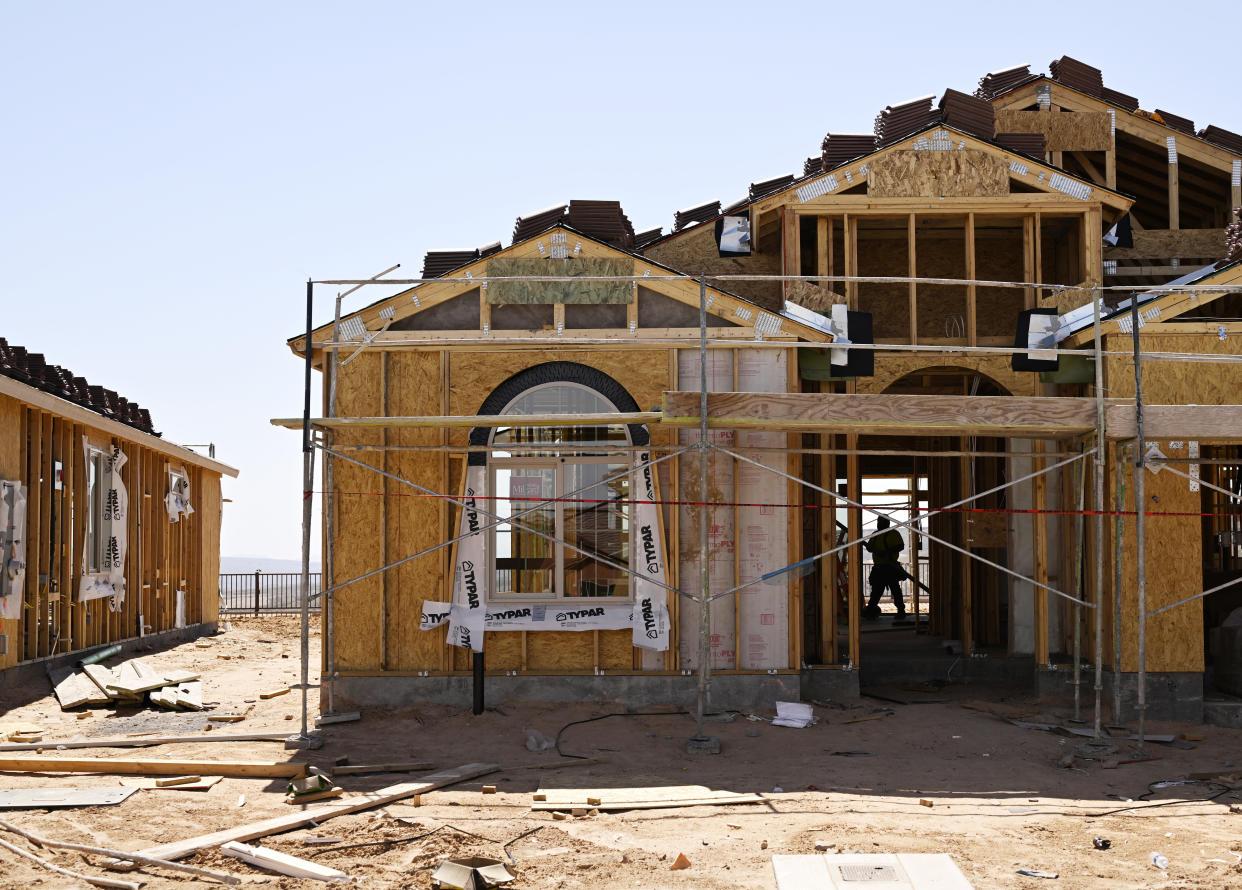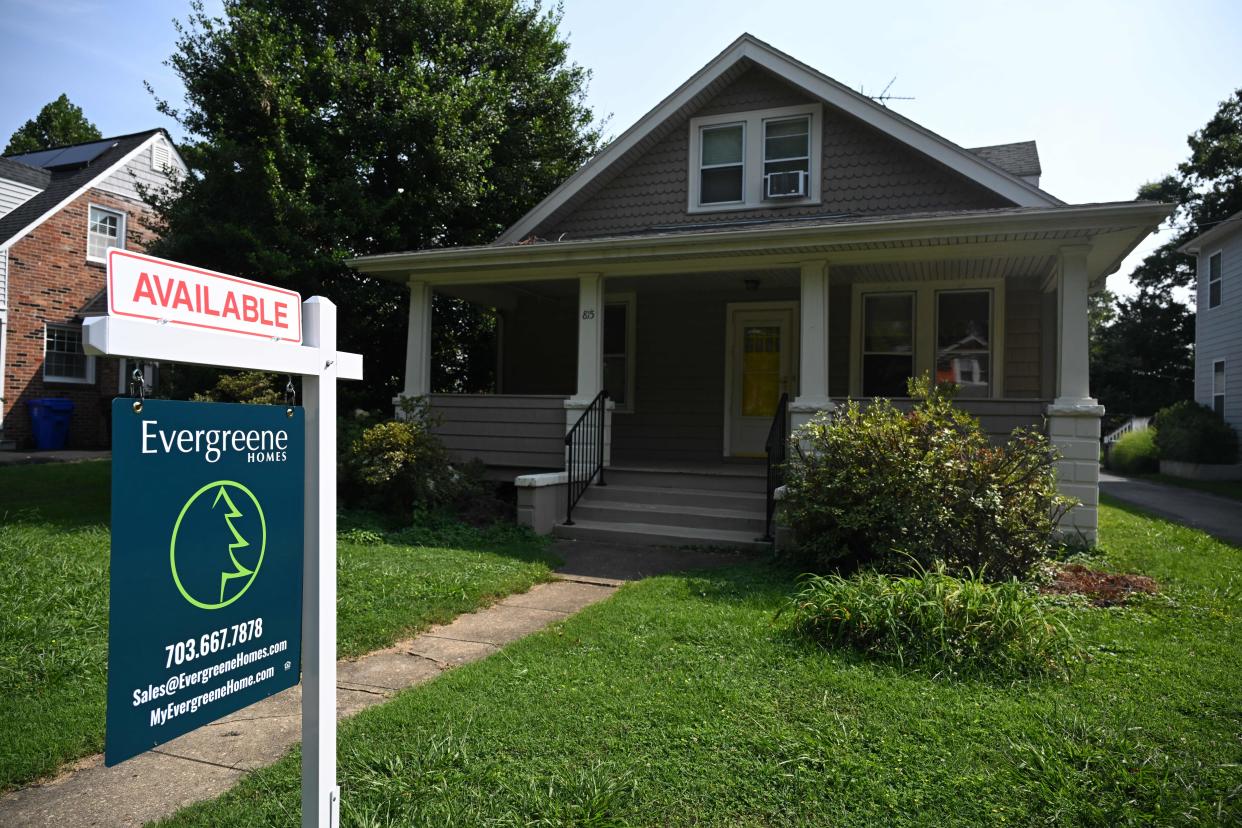Here's why 7% mortgage rates are so much worse for buyers now than 20 years ago
Mortgage rates haven’t been this high for over two decades, but it’s far worse to be a homebuyer now than then.
Buyers are still sticker-shocked by the memory of historically low rates when they could afford so much more two years ago. Those still on the hunt in today’s market are facing a major inventory shortage as many homeowners keep their properties off the market. That’s just pushed up home prices at a rapid pace.
Add in high inflation and decades of stagnant wage growth, and buyers now have less purchasing power than twenty-some years ago, which has cascaded into an entrenched affordability crisis as rates rise.
"Over time that can have a significant impact, as we’ve seen in recent decades," Andy Walden, vice president of enterprise research and strategy at Black Knight, told Yahoo Finance. "The market has become much more reliant on a low interest rate environment to support current home price levels than it has been historically."

Mortgage rates: now and then
This week, the rate on the 30-year fixed mortgage averaged 7.12%, down from 7.18% the week prior, according to Freddie Mac. That was the fourth straight week the rate topped 7%, the first time that has happened since April 2002.
"At that time, though mortgage rates were above 7%, they had been around 7% for most of the previous decade," Len Kiefer, deputy chief economist at Freddie Mac, told Yahoo Finance. "The market was quite different."
In fact, rates had averaged 7.66% from 1992 to April 2002, according to Freddie Mac data. They began falling after that, averaging 6.03% until mid-2006, when the housing bubble peaked.
"The Federal Reserve was concerned about the possibility of deflation," Kiefer said about the early 2000s. "The Core PCE price index increased only 1.4% from March 2001 to March 2002. In today’s economy the Federal Reserve is concerned about inflation, with the Core PCE price index up 4.1% year-over-year."
Today’s homebuyers couldn’t have a more different experience, with the Fed raising its benchmark rate rapidly over the past 18 months. Mortgage rates followed, but only after buyers witnessed them plunging under 3% for more than a year during the pandemic, setting off a frenzy among buyers and a refinance boom among homeowners.
Read more: What the latest Fed rate hike plan means for mortgage rates and loans
By the end of that record-low run, nearly no one had a mortgage rate above 6%. In fact, 91.8% of US homeowners had a mortgage with an interest rate below 6% in June, Redfin found. Furthermore, 82.4% of homeowners have a mortgage rate under 5% and 62% have a rate below 4%.
"It all comes from how homebuyers – and correspondingly home prices – behave in a falling interest rate environment like the one we’ve broadly been in for the past 40 years," Walden said.
Supply and demand: now and then

Now, all those homeowners with a low mortgage rate don't want to sell and give it up, creating this so-called lock-in effect.
That’s led to historically low inventory on the resale side and depressed sales. What lingers on the market is "old, tired inventory," Toll Brothers CEO Douglas Yearley said on the company's earnings call last month.
Instead, buyers still on the hunt are funneling into the new home market, boosting sales there. Builders have responded by ramping up construction, but not enough to offset the shortage of homes.
Demand remains solid, but fickle.
The millennial generation — now the largest generation — has entered its prime household formation and homebuying years, but slight increases in mortgage rates are pricing many of them out. The number of applications for home purchases has been declining as rates topped 7%.
"It’s a very interesting picture right now," National Association of Realtors deputy chief economist Jessica Lautz said recently to Yahoo Finance Live (video above). "We have a lot of strong demand for housing. There’s a lot of consumers who are sitting on the sidelines. Interest rates, though, keep going up."
Two decades ago, the picture was different.
While the economy entered an eight-month recession starting March 2001, the effects spared retail sales and housing for much of that year, according to a Bureau of Economic Analysis report from 2002 chronicling the 2001 labor market. Consumer confidence only started to wane in the second half following the Sept. 11, 2001, terrorist attacks and rising unemployment.
"Sliding mortgage rates and steady consumer confidence buttressed residential construction, at least until midyear," the report found. "Sales of existing homes, like those of new homes, hovered close to their prior two years’ levels for much of 2001, and real estate employment matched that flat trend."
In fact, the level of single-family starts, new home sales, and existing home sales were all higher than compared with now.
The volume of mortgage applications for purchases also continued to climb in the early 2000s, an indication of steady demand and the inverse of what's happening today.
"Appreciating home values reinforced the investment aspect of home buying, in sharp contrast to falling stock prices," the BLS report said.
Home prices: now and then
Both eras saw significant increases in home prices. But the most recent run-up has outpaced the one from two decades ago.
When mortgage rates hit historic lows in the pandemic, buyers armed with cheap financing bid up prices. From January 2020 to June 2022’s all-time peak, prices jumped 45.15%, according to the S&P Case-Shiller national home price index.
Buyers were "pushing up their budgets and increasing competition in the market, which leads to home prices rising much more than incomes as buyers are able to leverage the same income to buy an even more expensive home," Walden said.
Even though prices retreated for seven months last year as buyers shied from higher mortgage rates, they began recovering this year and are still 45.12% higher than in January 2020 — just off their all-time peak.
Home prices also were rising 20 years ago, but not quite at the same pace.
The change in home values between January 2000 and June 2002 was 22.3%, or about half the growth rate buyers saw in a similar 18-month span between pre-pandemic and the 2022 peak. From January 2000 to June 2003, prices grew 33.23%, less than the comparable period in the 2020s.
"Although the median price of existing single-family homes continued to grow, affordability rose as well, thanks to moderating mortgage rates," the BLS report said.
Affordability: now and then

The biggest difference between now and then may be affordability.
In April 2002, it took 27% of the median household income to afford the mortgage payment on a median-priced home purchase. That’s slightly less than the average of 27.76% dating back to 1975, according to figures provided by mortgage technology and data provider Black Knight.
By comparison, today’s buyers are spending 38.30% of the median household income to purchase a median-priced home.
Another way to look at it is by measuring the median home price to median income ratio.
From 1975 to 2000, the median home price was on average 3.6 times the median household income. Today, that figure has jumped to 5.9 times the median income – slightly lower than the six times reached last summer before prices began to correct, Walden said.
"The last time interest rates were at this level, home prices, which are up 160% over that span, have risen at twice the pace of incomes, which are up only 80% over that period," Walden said.
"That all works fine until interest rates push sharply higher, which means that you’re no longer able to leverage those same income dollars to the degree you were in recent years," he said, "which causes a significant affordability pinch."
Gabriella is a personal finance and housing reporter at Yahoo Finance. Follow her on Twitter @__gabriellacruz.
Read the latest financial and business news from Yahoo Finance
